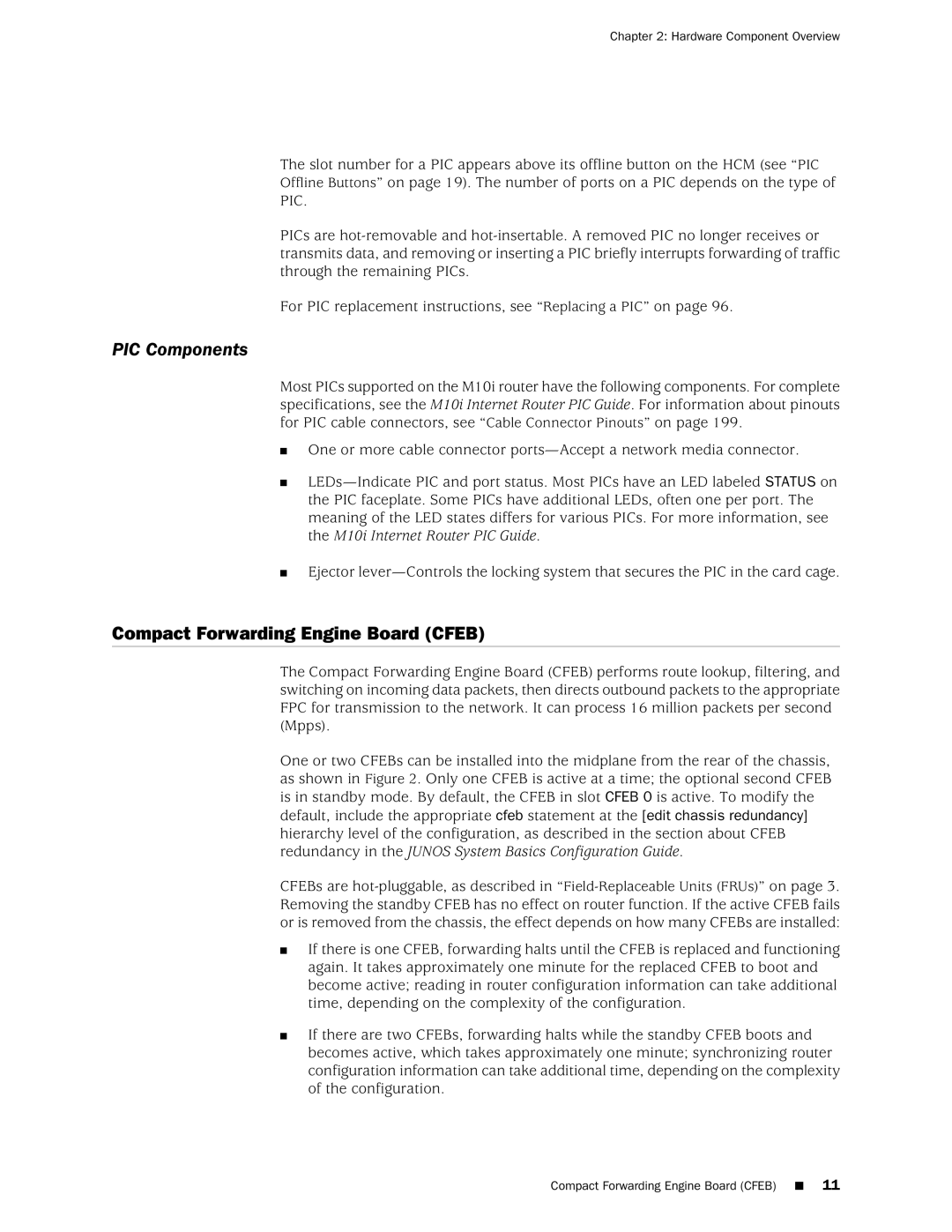Chapter 2: Hardware Component Overview
The slot number for a PIC appears above its offline button on the HCM (see “PIC Offline Buttons” on page 19). The number of ports on a PIC depends on the type of PIC.
PICs are
For PIC replacement instructions, see “Replacing a PIC” on page 96.
PIC Components
Most PICs supported on the M10i router have the following components. For complete specifications, see the M10i Internet Router PIC Guide. For information about pinouts for PIC cable connectors, see “Cable Connector Pinouts” on page 199.
■One or more cable connector
■
■Ejector
Compact Forwarding Engine Board (CFEB)
The Compact Forwarding Engine Board (CFEB) performs route lookup, filtering, and switching on incoming data packets, then directs outbound packets to the appropriate FPC for transmission to the network. It can process 16 million packets per second (Mpps).
One or two CFEBs can be installed into the midplane from the rear of the chassis, as shown in Figure 2. Only one CFEB is active at a time; the optional second CFEB is in standby mode. By default, the CFEB in slot CFEB 0 is active. To modify the default, include the appropriate cfeb statement at the [edit chassis redundancy] hierarchy level of the configuration, as described in the section about CFEB redundancy in the JUNOS System Basics Configuration Guide.
CFEBs are
■If there is one CFEB, forwarding halts until the CFEB is replaced and functioning again. It takes approximately one minute for the replaced CFEB to boot and become active; reading in router configuration information can take additional time, depending on the complexity of the configuration.
■If there are two CFEBs, forwarding halts while the standby CFEB boots and becomes active, which takes approximately one minute; synchronizing router configuration information can take additional time, depending on the complexity of the configuration.
Compact Forwarding Engine Board (CFEB) ■ 11
